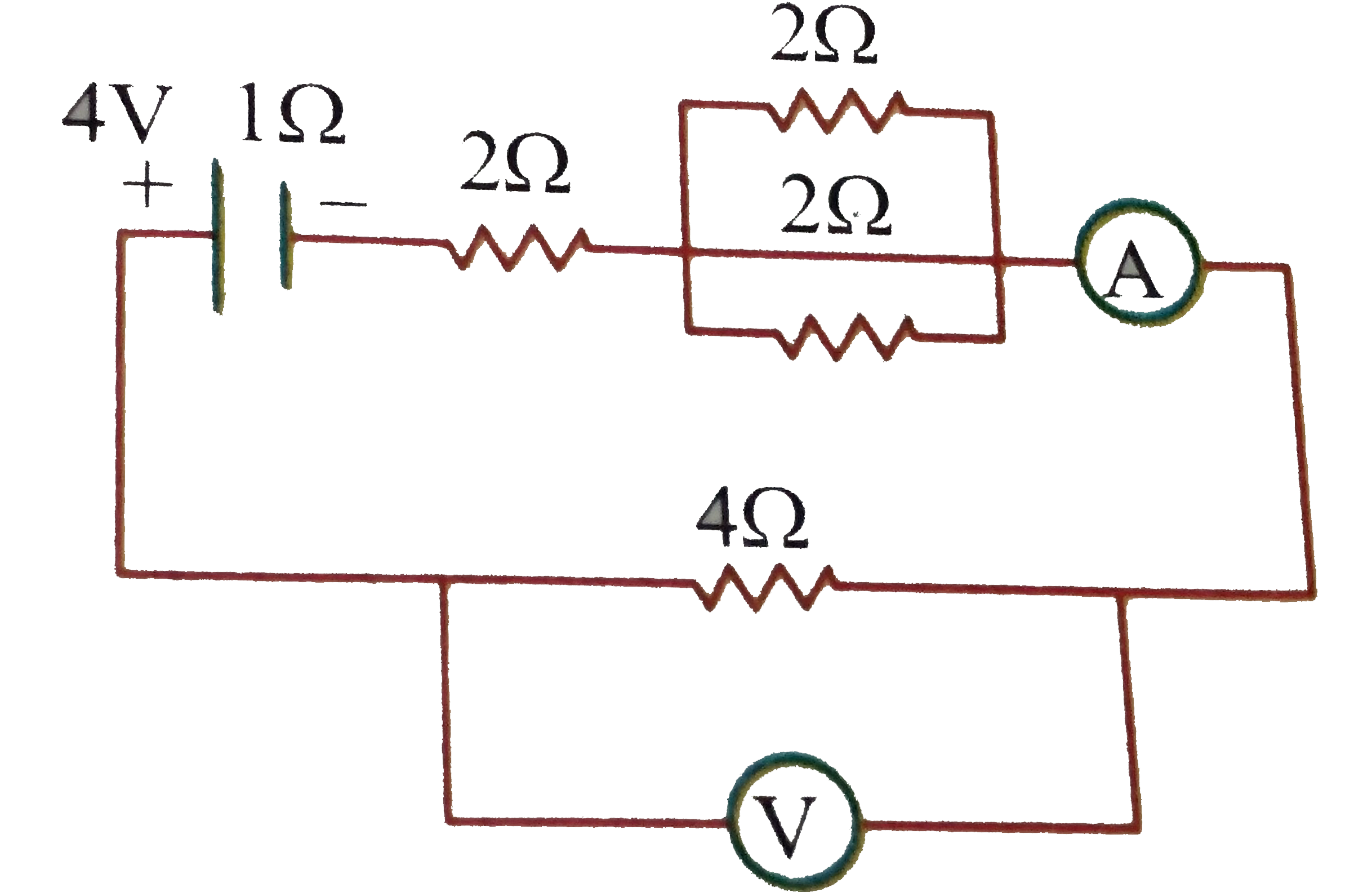Under what is the heat produced in an electric circuit: (i) directly proportional (ii) inversely proportional to the resistance of the circuit ?
To solve the question regarding the relationship between heat produced in an electric circuit and the resistance of the circuit, we can analyze the situation using the formula for heat produced in an electric circuit.
1. Understanding the Formula for Heat Produced:
The heat produced (H) in an electric circuit can be expressed using the formula:
H=P×t
where P is the power and t is the time.
2. Expressing Power:
Power (P) in an electric circuit can be calculated using:
P=V×I
where V is the voltage and I is the current.
3. Using Ohm's Law:
According to Ohm's Law, we have:
V=I×R
where R is the resistance.
4. Heat in Series Circuit:
In a series circuit, the current (I) remains constant. Therefore, we can express the heat produced as:
H=V×I×t=I2×R×t
Here, since I is constant, we can see that:
H∝R(directly proportional to resistance)
This indicates that in a series circuit, the heat produced is directly proportional to the resistance.
5. Heat in Parallel Circuit:
In a parallel circuit, the voltage (V) across each branch remains constant. The current through each branch can be expressed as:
I=VR
Therefore, the heat produced can be expressed as:
H=V×I×t=V×(VR)×t=V2R×t
Here, since V and t are constants, we can see that:
H∝1R(inversely proportional to resistance)
This indicates that in a parallel circuit, the heat produced is inversely proportional to the resistance.
Conclusion:
- In a series circuit, the heat produced is directly proportional to the resistance.
- In a parallel circuit, the heat produced is inversely proportional to the resistance.
The heat produced (H) in an electric circuit can be expressed using the formula:
H=P×t
where P is the power and t is the time.
Power (P) in an electric circuit can be calculated using:
P=V×I
where V is the voltage and I is the current.
According to Ohm's Law, we have:
V=I×R
where R is the resistance.
In a series circuit, the current (I) remains constant. Therefore, we can express the heat produced as:
H=V×I×t=I2×R×t
Here, since I is constant, we can see that:
H∝R(directly proportional to resistance)
This indicates that in a series circuit, the heat produced is directly proportional to the resistance.
In a parallel circuit, the voltage (V) across each branch remains constant. The current through each branch can be expressed as:
I=VR
Therefore, the heat produced can be expressed as:
H=V×I×t=V×(VR)×t=V2R×t
Here, since V and t are constants, we can see that:
H∝1R(inversely proportional to resistance)
This indicates that in a parallel circuit, the heat produced is inversely proportional to the resistance.
- In a series circuit, the heat produced is directly proportional to the resistance.
- In a parallel circuit, the heat produced is inversely proportional to the resistance.
Topper's Solved these Questions
- CURRENT ELECTRICITYBOOK - PRADEEPCHAPTER - CURRENT ELECTRICITYEXERCISE - Conceptual Problems
3 Videos
- CURRENT ELECTRICITYBOOK - PRADEEPCHAPTER - CURRENT ELECTRICITYEXERCISE - Very short Q/A
7 Videos
- COMMUNICATION SYSTEMSBOOK - PRADEEPCHAPTER - COMMUNICATION SYSTEMSEXERCISE - MODEL TEST PAPER-2
9 Videos
- DUAL NATURE OF RADIATION AND MATTERBOOK - PRADEEPCHAPTER - DUAL NATURE OF RADIATION AND MATTEREXERCISE - Exercise
191 Videos
Similar Questions
Knowledge Check

What is the equivalent resistance of the circuitA6ΩB7ΩC8ΩD9ΩAssertion : Two electric bulbs of 50 and 100W are given. When connected in series 50W bulb glows more but When connected parallel 100W bulb glows more .
Reason : In series combination, power is directly proportional to the resistance of circuit. But in parallel combination, power is inversely proportional to the resistance of the circuit.AIf both assertion and reason are ture and reason is the correct explanation of assertion.BIf both assertion and reason are true but reason is not the correct explanation of assertion.CIf assertion is true but reason is false.DIf assertion and reason both are false.The heat produced by passing an electric current through a fixed resistor is proportional to the square of:
Amagnitude of resistance of the resistorBtemperature of the resistorCmagnitude of currentDtime for which current is passed
Assertion: Two electric bulbs of 50 and 100W. Are given. When connected in sereis 50W bulb glows more but when connected parallel 100 W bulb glows more.
Reason : In series combination, power is directly proportional to the resistance of circuit. but in parallel comb ination, power is inversely proportional to the resistance of the circuit.
View SolutionWhat causes heating in electrical circuits?
View SolutionElectric field intensity at a point is inversely proportional to cube of its distance due to
View Solution_____________ law states that electric current is proportional to voltage and inversely proportional to resistance
View SolutionIf the kinetic energy of body is directly proportional to time t, the magnitude of force acting on the body is (i) directly proportional to √t
(ii) inversely proportional to √t
(iii) directly proportional to the speed of the body.
(iv) inversely proportional to the speed of the body.
View Solution
